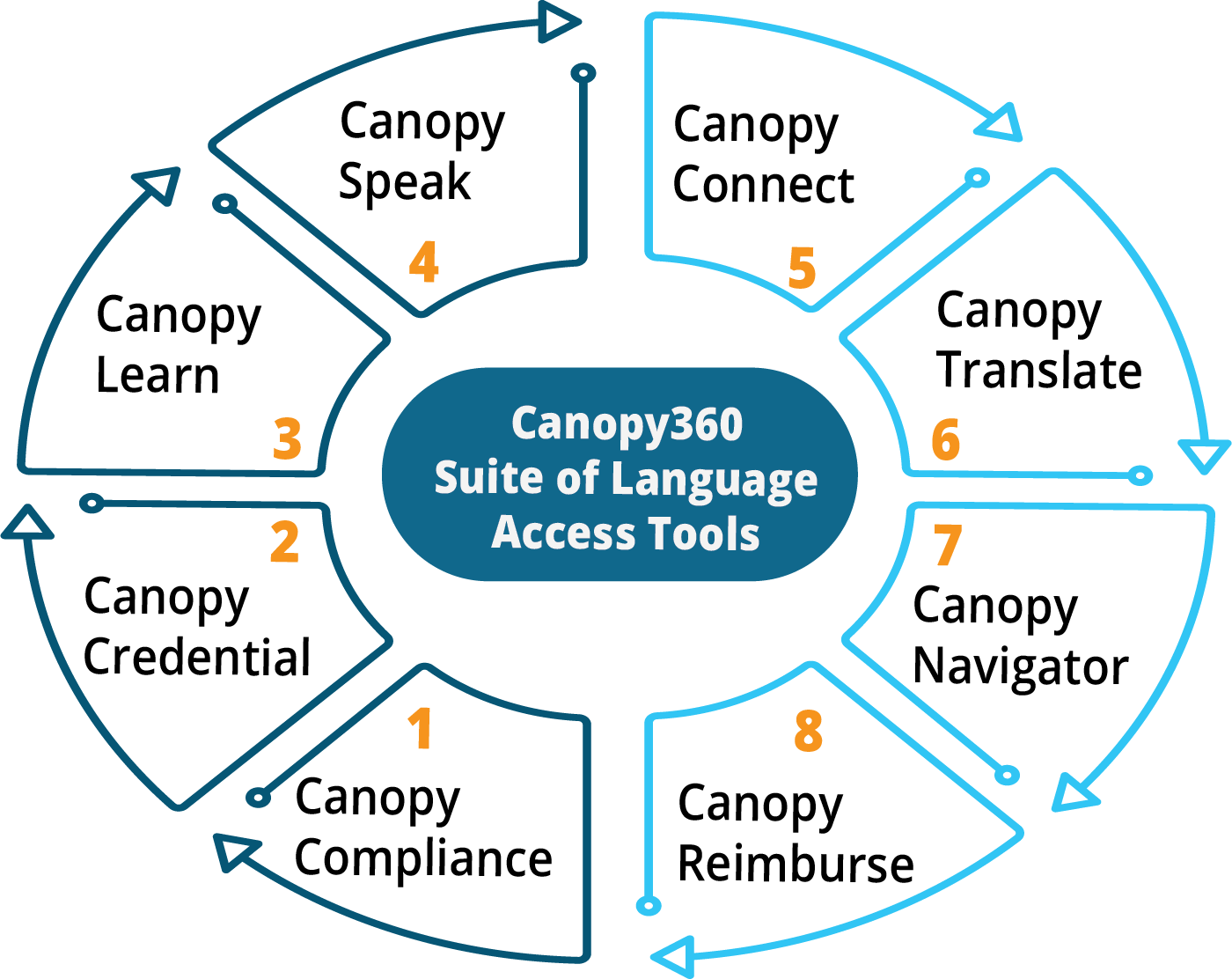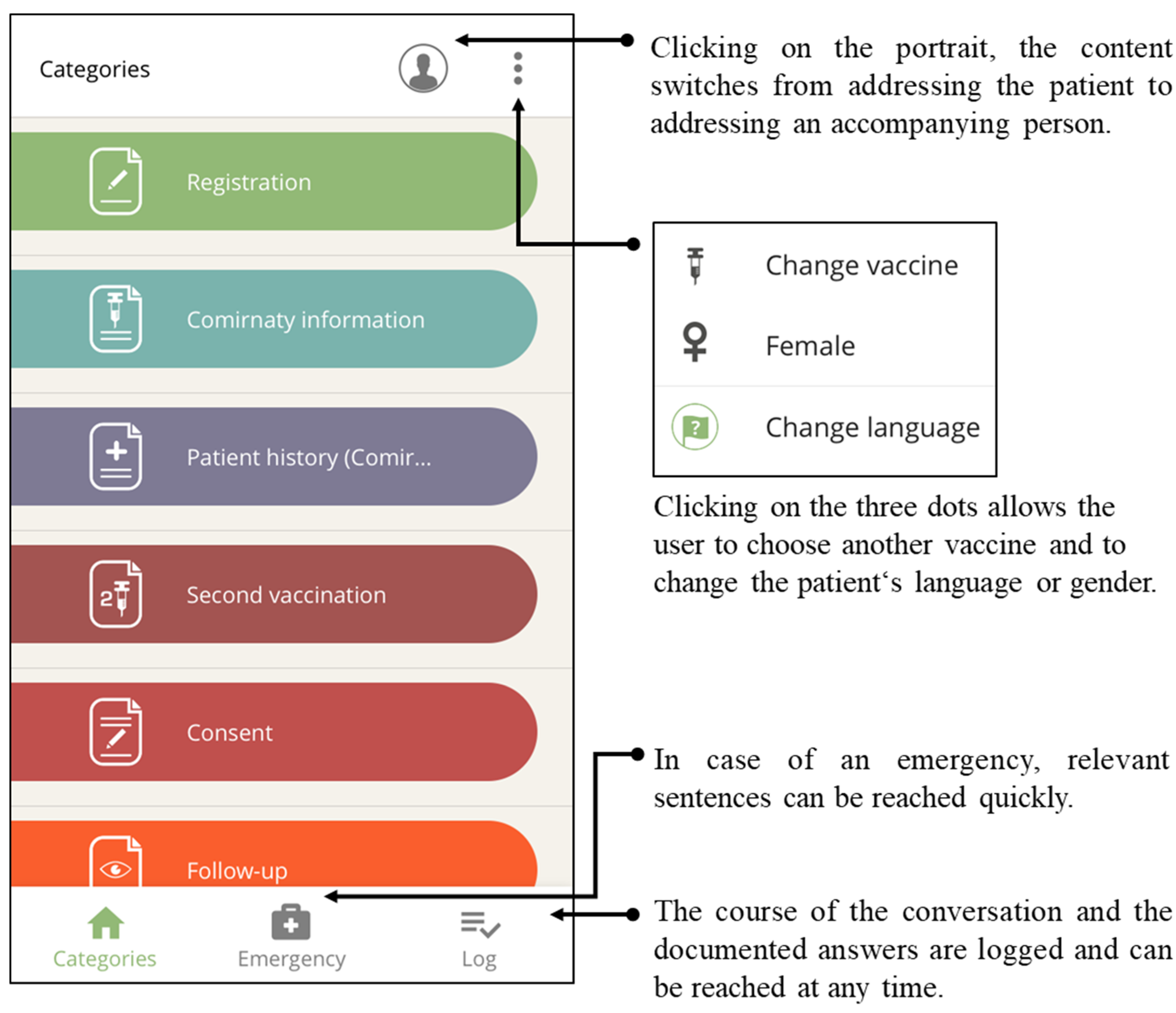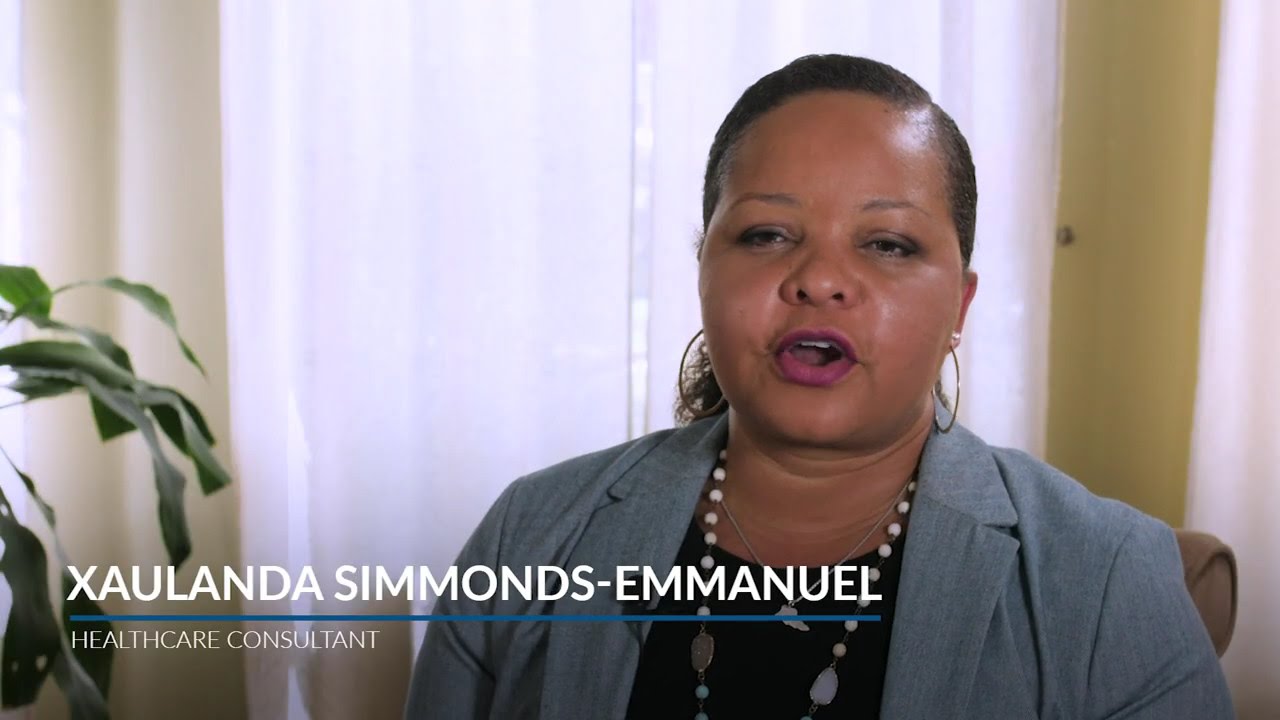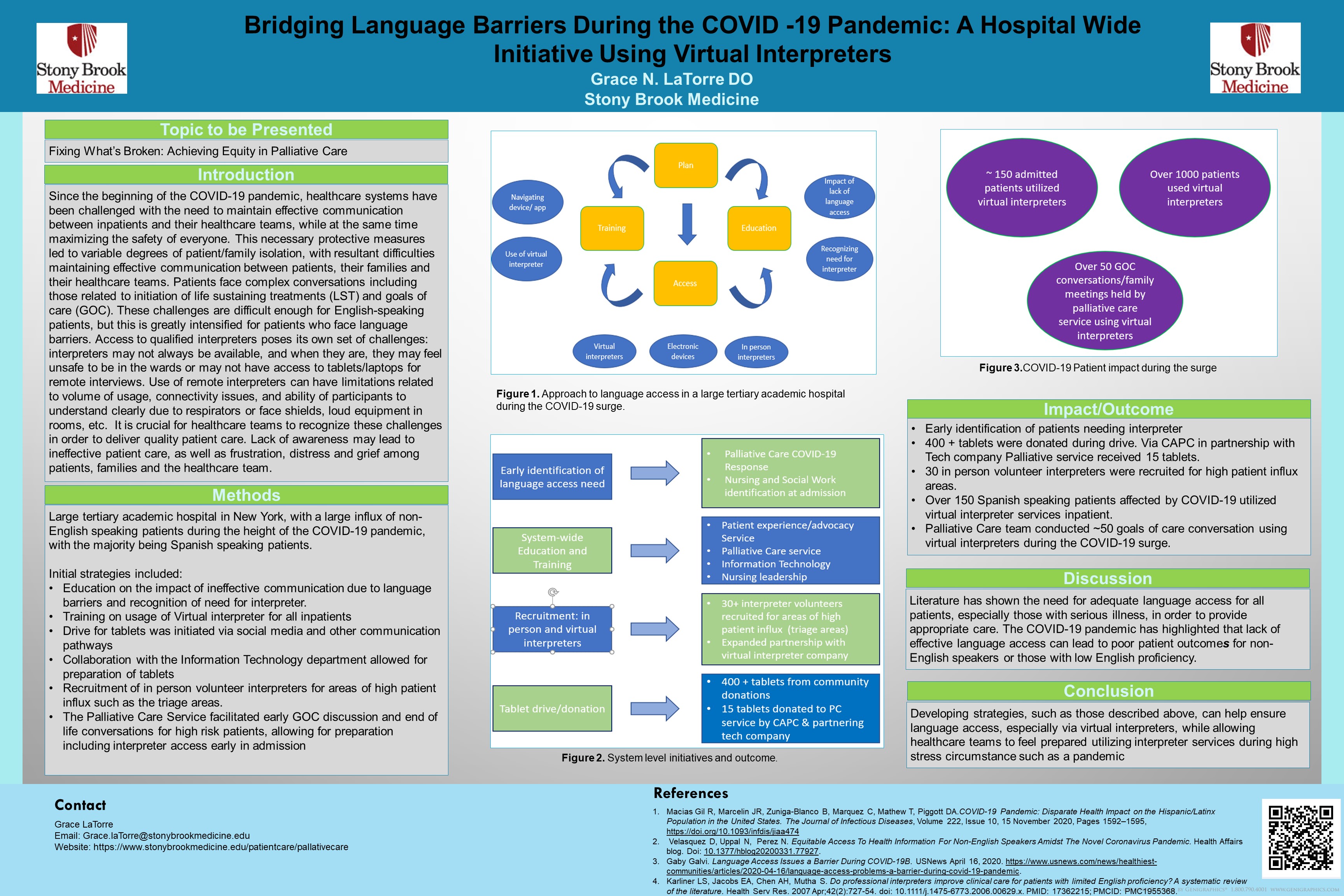
As the world becomes more diverse, healthcare providers need to ensure that they can effectively communicate with patients in a multitude of languages. In 2023, multilingual healthcare is becoming increasingly important as the number of non-native English speakers seeking medical care continues to rise. Language barriers can lead to miscommunication and misunderstandings between patients and healthcare providers, which can ultimately have negative impacts on patient health outcomes. In this article, we will explore the challenges associated with language barriers in healthcare and how multilingual healthcare can help break them down.
Why Language Barriers are a Problem in Healthcare

Language barriers can pose significant challenges for both patients and healthcare providers. When patients cannot communicate effectively with their healthcare provider, they may struggle to describe their symptoms accurately or understand their diagnosis and treatment plan. This can lead to misunderstandings and potentially harmful medical errors.
On the other hand, healthcare providers may also find it challenging to communicate with non-native English speakers. Providers may rely on interpreters who may not be available at all times or may not have the necessary medical knowledge to accurately convey information. Providers may also struggle to understand cultural nuances that impact patient care.
The Importance of Multilingual Healthcare

Multilingual healthcare is an approach to healthcare that recognizes the importance of language and cultural diversity in healthcare delivery. By providing multilingual healthcare services, healthcare providers can improve patient outcomes by ensuring that patients can communicate effectively with their healthcare team.
There are many benefits to providing multilingual healthcare services. Patients are more likely to trust their healthcare providers when they can communicate effectively with them. They are also more likely to follow treatment plans and seek preventative care when they can understand the information that is being provided to them.
Multilingual healthcare can also help reduce healthcare costs. When patients can communicate effectively with their healthcare team, there is less risk of medical errors, misdiagnosis, or unnecessary tests and procedures.
Challenges of Multilingual Healthcare

While there are many benefits to providing multilingual healthcare services, there are also challenges associated with implementing them. One of the biggest challenges is ensuring that healthcare providers have access to qualified interpreters who can accurately convey medical information.
Interpreters must have strong language skills in both the patient’s language and English, as well as a deep understanding of medical terminology. They must also be able to interpret cultural nuances that impact care. Finding qualified interpreters can be challenging, especially in areas where certain languages are less common.
Another challenge is ensuring that patients feel comfortable using interpreters. Patients may feel embarrassed or uncomfortable discussing personal health information with an interpreter present. Providers must work to build trust with their patients and ensure that they understand the importance of effective communication in healthcare.
Strategies for Overcoming Language Barriers in Healthcare

There are several strategies that healthcare providers can use to overcome language barriers and provide effective multilingual healthcare services. One approach is to hire bilingual healthcare providers who can communicate effectively with non-native English speakers. This approach can be particularly effective in communities where certain languages are more common.
Healthcare providers can also work to build relationships with community organizations that serve non-native English speakers. These organizations can help connect patients with healthcare providers who speak their language or provide information about available interpreting services.
Finally, healthcare providers can invest in technology that supports multilingual healthcare delivery. For example, telehealth platforms can provide remote interpreting services, making it easier for patients to communicate with their healthcare team from home.
Conclusion
In 2023, multilingual healthcare is becoming increasingly important as the world becomes more diverse. Language barriers can pose significant challenges for both patients and healthcare providers, leading to miscommunication and misunderstandings that can negatively impact patient health outcomes. By providing multilingual healthcare services, healthcare providers can improve patient outcomes by ensuring that patients can communicate effectively with their healthcare team. While there are challenges associated with implementing multilingual healthcare services, there are also many strategies that healthcare providers can use to overcome them and provide effective care for non-native English speakers.
FAQs
Q1: What is multilingual healthcare?
Multilingual healthcare is an approach to healthcare delivery that recognizes the importance of language and cultural diversity in healthcare. By providing multilingual healthcare services, healthcare providers can improve patient outcomes by ensuring that patients can communicate effectively with their healthcare team.
Q2: Why are language barriers a problem in healthcare?
Language barriers can lead to miscommunication and misunderstandings between patients and healthcare providers, which can ultimately have negative impacts on patient health outcomes.
Q3: What are some of the challenges associated with implementing multilingual healthcare services?
One of the biggest challenges is ensuring that healthcare providers have access to qualified interpreters who can accurately convey medical information. Another challenge is ensuring that patients feel comfortable using interpreters.
Q4: What are some strategies for overcoming language barriers in healthcare?
Strategies include hiring bilingual healthcare providers, building relationships with community organizations, and investing in technology that supports multilingual healthcare delivery.
Q5: What are the benefits of providing multilingual healthcare services?
Multilingual healthcare can improve patient outcomes by ensuring that patients can communicate effectively with their healthcare team. Patients are more likely to trust their providers, follow treatment plans, and seek preventative care. Multilingual healthcare can also help reduce healthcare costs by reducing the risk of medical errors, misdiagnosis, or unnecessary tests and procedures.
Multilingual Healthcare: Overcoming Language Barriers to Improve Patient Communication
As the global population becomes more diverse, healthcare providers are facing new challenges in caring for patients who speak different languages. Language barriers can impact patient communication, leading to misunderstandings, misdiagnosis, and poor healthcare outcomes. However, by providing multilingual healthcare services, healthcare providers can overcome these barriers and improve patient communication, trust, and health outcomes.
In this article, we’ll explore the benefits of multilingual healthcare, ways to improve language access in healthcare, and how technology is transforming language interpretation in healthcare. We’ll also address some common questions about multilingual healthcare and provide resources for healthcare providers looking to enhance their language services.
The Impact of Language Barriers on Patient Communication
For patients with limited English proficiency (LEP), communicating with healthcare providers can be a significant challenge. Patients may struggle to describe their symptoms or understand medical terminology, leading to miscommunication and frustration. Additionally, patients who do not fully understand their healthcare options may be less likely to seek preventative care or follow treatment plans.
Language barriers can also impact healthcare outcomes, leading to misdiagnosis, delayed treatment, or unnecessary tests and procedures. A study published by the Journal of General Internal Medicine found that LEP patients were more likely to experience adverse events such as medication errors, hospital readmissions, and longer hospital stays.
Providing Multilingual Healthcare: Benefits and Best Practices
To ensure effective communication and positive healthcare outcomes for patients with LEP, healthcare providers must offer multilingual healthcare services. Providing language interpretation and translation services can benefit patients and providers alike, improving care quality, patient satisfaction, and healthcare efficiency.
Some of the benefits of multilingual healthcare include:
- Improved patient communication and understanding
- Increased patient trust and satisfaction
- Reduced risk of medical errors and misdiagnosis
- More accurate diagnosis and treatment
- Improved healthcare outcomes
- Higher patient compliance and adherence to treatment plans
To provide effective multilingual healthcare services, healthcare providers should follow some best practices:
- Assess language needs: Determine which languages are most prevalent among your patient population and develop a plan to address language barriers.
- Provide interpretation services: Hire professional interpreters or use telephonic or video interpretation services to ensure accurate communication between patients and providers.
- Use translated materials: Offer translated informational materials such as brochures, consent forms, and discharge instructions in multiple languages.
- Train staff on cultural competence: Educate healthcare staff on cultural competence and sensitivity to the diverse needs of patients with LEP.
- Evaluate language services: Regularly evaluate the effectiveness of your language services and make adjustments as needed.
Technology and Language Interpretation in Healthcare
Advancements in technology have transformed the way healthcare providers offer multilingual healthcare services. Today, healthcare providers can use various technological tools to provide interpretation services, including telephonic and video interpretation, speech-to-text transcription, and translation software.
Telephonic and video interpretation services allow healthcare providers to quickly connect with professional interpreters who can translate for patients in real-time. Speech-to-text transcription services can convert spoken words into text, making communication easier for patients who are deaf or hard of hearing. Translation software can also help providers translate written materials quickly and accurately.
While technology can enhance language interpretation in healthcare, it’s essential to remember that human interpretation services remain the gold standard for ensuring accurate communication between patients and providers. Providers should aim to use a combination of technology and professional interpretation services to meet the diverse language needs of their patient population.
FAQs about Multilingual Healthcare
- What is multilingual healthcare?
Multilingual healthcare refers to the provision of healthcare services in multiple languages, designed to overcome language barriers and improve patient communication.
- Why is multilingual healthcare important?
Multilingual healthcare is essential for improving patient outcomes, reducing medical errors, and increasing patient trust and satisfaction. It also ensures that patients with LEP have equal access to healthcare services.
- What are the benefits of providing multilingual healthcare services?
Multilingual healthcare can improve patient outcomes by ensuring that patients can communicate effectively with their healthcare team. Patients are more likely to trust their providers, follow treatment plans, and seek preventative care. Multilingual healthcare can also help reduce healthcare costs by reducing the risk of medical errors, misdiagnosis, or unnecessary tests and procedures.
- What are some best practices for providing multilingual healthcare services?
Best practices for providing multilingual healthcare include assessing language needs, providing interpretation services, using translated materials, training staff on cultural competence, and evaluating language services regularly.
- How is technology transforming language interpretation in healthcare?
Advancements in technology have transformed the way healthcare providers offer multilingual healthcare services. Today, healthcare providers can use various technological tools to provide interpretation services, including telephonic and video interpretation, speech-to-text transcription, and translation software.
Conclusion
In conclusion, multilingual healthcare is essential for overcoming language barriers and improving patient communication, trust, and healthcare outcomes. By providing language interpretation and translationservices, healthcare providers can ensure that patients with LEP have equal access to healthcare services and receive the care they need. Healthcare providers should assess their patient population’s language needs and develop a plan to address language barriers, provide interpretation services, use translated materials, train staff on cultural competence, and evaluate language services regularly.
While technology has transformed the way healthcare providers offer multilingual healthcare services, it’s essential to remember that human interpretation services remain the gold standard for ensuring accurate communication between patients and providers. Providers should aim to use a combination of technology and professional interpretation services to meet the diverse language needs of their patient population.
By providing effective multilingual healthcare services, healthcare providers can improve healthcare outcomes, reduce medical errors, and ensure that all patients receive quality care regardless of their language proficiency. As the global population continues to become more diverse, it’s crucial for healthcare providers to prioritize language access in healthcare and work towards creating an inclusive healthcare system for all.
Resources for Multilingual Healthcare
Healthcare providers looking to enhance their language services may benefit from the following resources:
- The National CLAS Standards: The National Standards on Culturally and Linguistically Appropriate Services (CLAS) provide a framework for healthcare organizations to provide equitable, effective, and culturally responsive care.
- The Joint Commission: The Joint Commission provides accreditation and certification to healthcare organizations that meet specific quality standards, including standards related to multilingual healthcare services.
- LanguageLine Solutions: LanguageLine Solutions offers telephonic and video interpretation services in over 240 languages, along with translation and localization services.
- Bridging the Gap: Bridging the Gap offers training programs for healthcare interpreters and cultural competence training for healthcare providers.
- The Office of Minority Health: The Office of Minority Health provides resources and information on addressing health disparities among minority populations, including those related to language access.
By utilizing these resources and implementing best practices for providing multilingual healthcare services, healthcare providers can ensure that all patients receive equitable and high-quality care.
In conclusion, multilingual healthcare is essential for overcoming language barriers and improving patient communication, trust, and healthcare outcomes. Healthcare providers must prioritize language access in healthcare and work towards creating an inclusive healthcare system for all. By providing effective multilingual healthcare services, healthcare providers can improve healthcare outcomes, reduce medical errors, and ensure that all patients receive quality care regardless of their language proficiency.
FAQs
- What is multilingual healthcare?
Multilingual healthcare refers to the provision of healthcare services in multiple languages, designed to overcome language barriers and improve patient communication.
- Why is multilingual healthcare important?
Multilingual healthcare is essential for improving patient outcomes, reducing medical errors, and increasing patient trust and satisfaction. It also ensures that patients with LEP have equal access to healthcare services.
- What are the benefits of providing multilingual healthcare services?
Multilingual healthcare can improve patient outcomes by ensuring that patients can communicate effectively with their healthcare team. Patients are more likely to trust their providers, follow treatment plans, and seek preventative care. Multilingual healthcare can also help reduce healthcare costs by reducing the risk of medical errors, misdiagnosis, or unnecessary tests and procedures.
- What are some best practices for providing multilingual healthcare services?
Best practices for providing multilingual healthcare include assessing language needs, providing interpretation services, using translated materials, training staff on cultural competence, and evaluating language services regularly.
- How is technology transforming language interpretation in healthcare?
Advancements in technology have transformed the way healthcare providers offer multilingual healthcare services. Today, healthcare providers can use various technological tools to provide interpretation services, including telephonic and video interpretation, speech-to-text transcription, and translation software.
Title: Multilingual Healthcare in 2023: Overcoming Language Barriers for Better Patient Communication
Introduction
In the United States, over 25 million people have limited English proficiency (LEP), and this number is expected to continue to grow as the global population becomes more diverse. Patients with LEP often struggle to communicate effectively with healthcare providers, leading to misunderstandings, misdiagnosis, and poor healthcare outcomes. Multilingual healthcare services can help overcome these barriers and ensure that all patients receive equitable and high-quality care, regardless of their language proficiency.
The Impact of Language Barriers on Patient Communication
Language barriers can impact patient communication in several ways, including:
- Misunderstandings: Patients with LEP may not understand medical terminology or be able to accurately convey their symptoms, leading to miscommunication and frustration.
- Delayed Treatment: Patients who do not fully understand their healthcare options may delay seeking treatment, leading to more severe health conditions.
- Misdiagnosis: Healthcare providers may misdiagnose patients due to misunderstandings or inaccuracies in translation.
- Reduced Patient Satisfaction: Patients who struggle to communicate with their healthcare providers may feel dissatisfied with their care, leading to lower patient satisfaction rates.
Providing Multilingual Healthcare: Benefits and Best Practices
To provide effective multilingual healthcare services, healthcare providers should follow some best practices:
- Assess language needs: Determine which languages are most prevalent among your patient population and develop a plan to address language barriers.
- Provide interpretation services: Hire professional interpreters or use telephonic or video interpretation services to ensure accurate communication between patients and providers.
- Use translated materials: Offer translated informational materials such as brochures, consent forms, and discharge instructions in multiple languages.
- Train staff on cultural competence: Educate healthcare staff on cultural competence and sensitivity to the diverse needs of patients with LEP.
- Evaluate language services: Regularly evaluate the effectiveness of your language services and make adjustments as needed.
Multilingual Healthcare Technologies
Advancements in technology have transformed the way healthcare providers offer multilingual healthcare services. Some examples of technology used in multilingual healthcare are:
- Telephonic and video interpretation services
- Speech-to-text transcription services
- Translation software
- Remote patient monitoring devices with multilingual capabilities
While technology can enhance language interpretation in healthcare, it’s essential to remember that human interpretation services remain the gold standard for ensuring accurate communication between patients and providers.
FAQs about Multilingual Healthcare
- What is multilingual healthcare?
Multilingual healthcare refers to the provision of healthcare services in multiple languages, designed to overcome language barriers and improve patient communication.
- Why is multilingual healthcare important?
Multilingual healthcare is essential for improving patient outcomes, reducing medical errors, and increasing patient trust and satisfaction. It also ensures that patients with LEP have equal access to healthcare services.
- What are the benefits of providing multilingual healthcare services?
Multilingual healthcare can improve patient outcomes by ensuring that patients can communicate effectively with their healthcare team. Patients are more likely to trust their providers, follow treatment plans, and seek preventative care. Multilingual healthcare can also help reduce healthcare costs by reducing the risk of medical errors, misdiagnosis, or unnecessary tests and procedures.
- What are some best practices for providing multilingual healthcare services?
Best practices for providing multilingual healthcare include assessing language needs, providing interpretation services, using translated materials, training staff on cultural competence, and evaluating language services regularly.
- How is technology transforming language interpretation in healthcare?
Advancements in technology have transformed the way healthcare providers offer multilingual healthcare services. Today, healthcare providers can use various technological tools to provide interpretation services, including telephonic and video interpretation, speech-to-text transcription, and translation software.
Conclusion
In conclusion, multilingual healthcare services are essential for overcoming language barriers and improving patient communication, trust, and healthcare outcomes. Healthcare providers must prioritize language access in healthcare and work towards creating an inclusive healthcare system for all. By employing effective multilingual healthcare services, healthcare providers can improve healthcare outcomes, reduce medical errors, and ensure that all patients receive quality care regardless of their language proficiency.
As the global population becomes more diverse, it’s crucial for healthcare providers to continue to enhance their language services and adapt to new technologies that can improve communication and care for patients with LEP.



